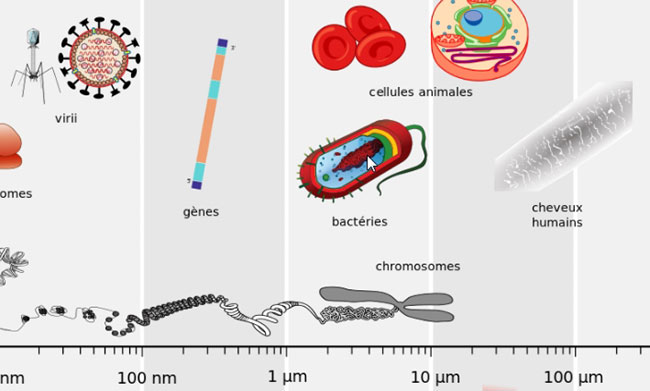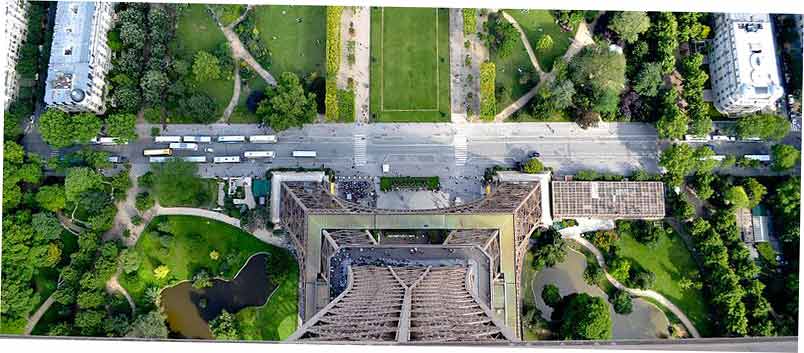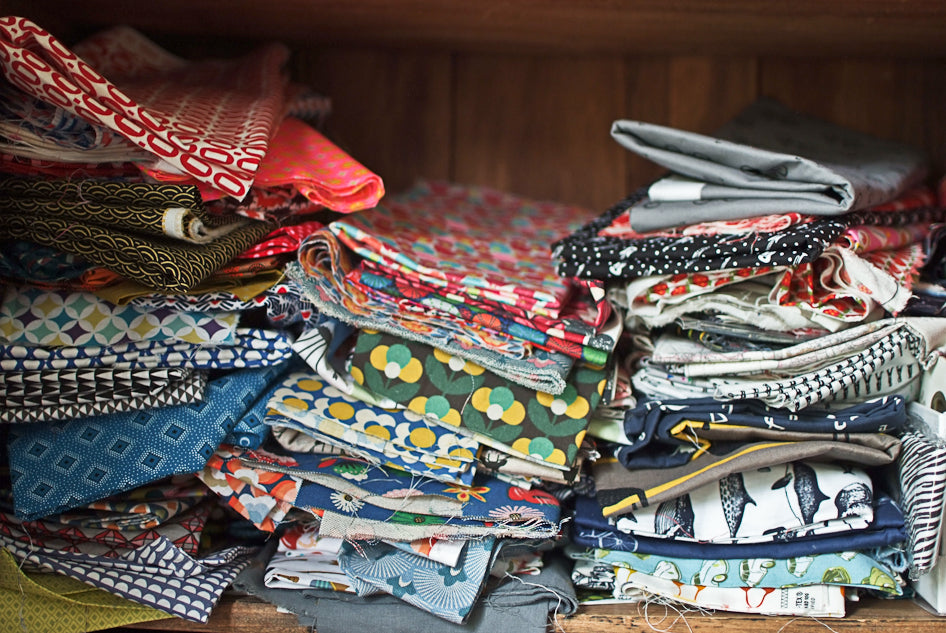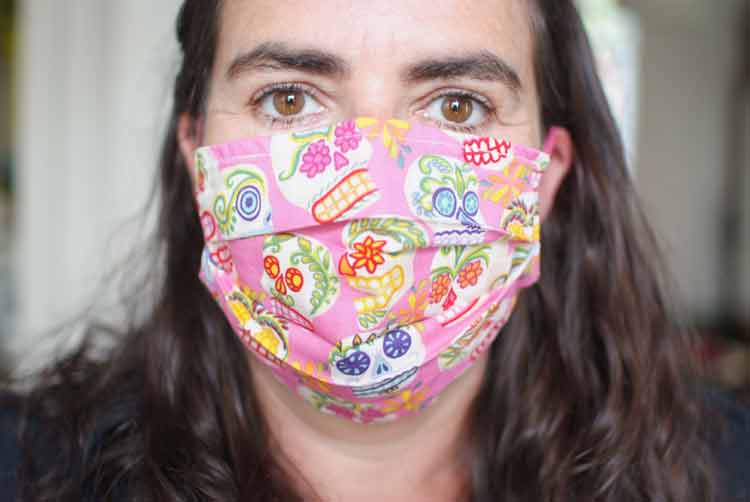Coronavirus - Manufacturing fabric masks. Video tutorials and instructions.
To the time when the government decides to make the masks so-called "general public" after the confinementEveryone asks questions about fabric masks. Wear a mask will probably be mandatory in the public transport. Therefore, the demand for masks is growing considerably. Everyone is looking for in to buy or in make. The FFP2 masks, sold in pharmacy, are reserved for the medical profession caring. The general public, wonders if the so-called surgical disposable masks will be really available. In the meantime, how in house ? Where are the tutorials in videoTo make it yourself? Should we wash its fabric masks after use? Should we have any notions of sewing ?

A "homemade" cloth mask
|
Summary 1. Is the fabric mask really effective? |
Is the fabric mask really effective?
No, but that brake. Then, a fabric mask is not as efficient as a surgical mask, focus on its properties below.
First because it does not prevent being contaminated by other bias.
The coronavirus SARS-COV2 virus is at the origin of the Covid-19 pandemic, the disease caused by this virus. It spreads easily especially by the postilions, droplets of saliva. This is not the only vector of contamination, and this article is not intended to explain all the routes of contamination. The main transmission factor seems to be direct contact by the hands.
The sizes of viruses, bacteria, postillions and holes of a mask.
The transmission
The virus needs to be worn byan autonomous living organism, such as a cell, such as a bacterium, a uni cellular system of 1 micro meter. The size of the virus is Nanometers.
- 1 micrometer is equivalent to 0.001 mm
- 10 nanometer is equivalent to 0.00001 mm

Sizes of viruses and bacteria
The size of the postilions?
The smaller plumbs measure the size of a bacterium.
A postillon measures between 1 to 100 micrometres (between 0.001mm and 0.00001mm).
So there is a factor 100 Between the size of the virus and a small postillon.
Does the fabric mask protect you totally from the virus?
No he brake more or less slightly.
I am not here to make science, we should take into account several factors. For example, droplets of more than 100 micrometers spread up to 2 meters, while small (from 1 to 50 micrometers) do not reach a meter. It should be taken into account of the ratio small / big postillon, etc ...
Consider, however, the size of a hole in a fabric relative to a postillon. The diameter of a cotton thread is about 0.5mm. It is understood that the size of the spaces between the wires depends on the way of braking the fabric. Estimates about the order of magnitude of a fabric hole at 0.1mm, ie 100 times larger than a bacterium or the smallest postillon.
"A hole in the fabric of a "homemade" mask 100 times larger that the smallest postillon. "
One thing is safe, the fabric mask does not stop 100% of the viruses, because the smaller plumbs, 1 micrometer,are 100 times smallerthat holesleft between the son of your mask fabric. 100 times is the size ratio between the second stage of the Eiffel Tower and a child.

A man seen from the Eiffel Tower, such as a bacterium to a tissue hole
The biggest are postillions hampered Or even stopped.
A mask with a single wall tissue reduces the risk, corn does not protect completely the risk of contamination. Qualitatively, it is no exaggeration to say thatit protects little At first glance.
The solution ? Gates gestures social distancing + + multi-layer masks with a filter wall.
What are the most at risk areas to catch Covid 19?
A summary of the study published in the British Medical Journal by Nicolas R Jones and colleagues shows trench so that the spread in a bus with the unfiltered air is much greater than in a seminar of several hundred people outside, or a meal 30 minutes to 10 in a spaced location from the other tables.
Account must be taken of the exposure time, the number of people, density, repetition, the use of masks. The equation can be very complicated. But without a mask, here's what the study shows (in red, the most risky):

I also refer to the excellent Video World on the subject.
A tutorial video cloth mask.
There is a link to a tutorial mask manufacturing video tissue.https://www.youtube.com/watch?v=qNLne8CE8xM
In just 5 minutes of video, with some sewing skills, you can make a mask ergonomic, washable.
The material and manufacturing time
It takes 15 minutes to make a mask.
Allow 40cam ofelastic. They are found in Rennes, haberdashery, among Okilebo near the eastern cemetery, shop opened in Drive. We find Ecolaine or Global Fabric ligne.Les supermarkets, at the time I write this article not propose more about Rennes.
choose cotton fabrics. Can be recovered from tissue sheets or folders, simply read the label. No shirt (it's Jersey).

Fabrics for masks
2 rectangles fabric of 19cm X 21cm. Ideally, it is recommended for this use 150g / m2.
Ideally, two different patterns for a two-sided model.
A sewing machine and one iron are necessary.
This model has two layers and allows easy insertion of a will filtered, like a tissue or Duster cloth (non-soaked) for cleaning to increase the efficiency of the mask. Do not put coffee filter, irritating to the throat and lungs. See previous chapter on efficiency.
AFNOR publishes on its website other tutorials, explanations and tips on usage.
How to wear the mask?
It is important to wear the mask on the chin and nose. It is laughable to put his mask around the neck, it can be contaminated inside during this time! Needless to play big shots Suburban with the helmet worn on the top of the forehead.
It should only use elastic. Wash it after use, no more than half a day.
I myself have followed this tutorial for making masks for my family and friends. I have fun with fabrics that I do not use my creations for leather on my online store. The occasion of to recycle even tissue that I did not use. I send by mail the masks that always delivers the mail during this period of confinement. One way to make myself useful and help neighbors, friends, family.

The guys who wear my masqus "homemade"

A "homemade" cloth mask

The elastic

Duster cloth (non-soaked)

 any question ?
any question ? 


